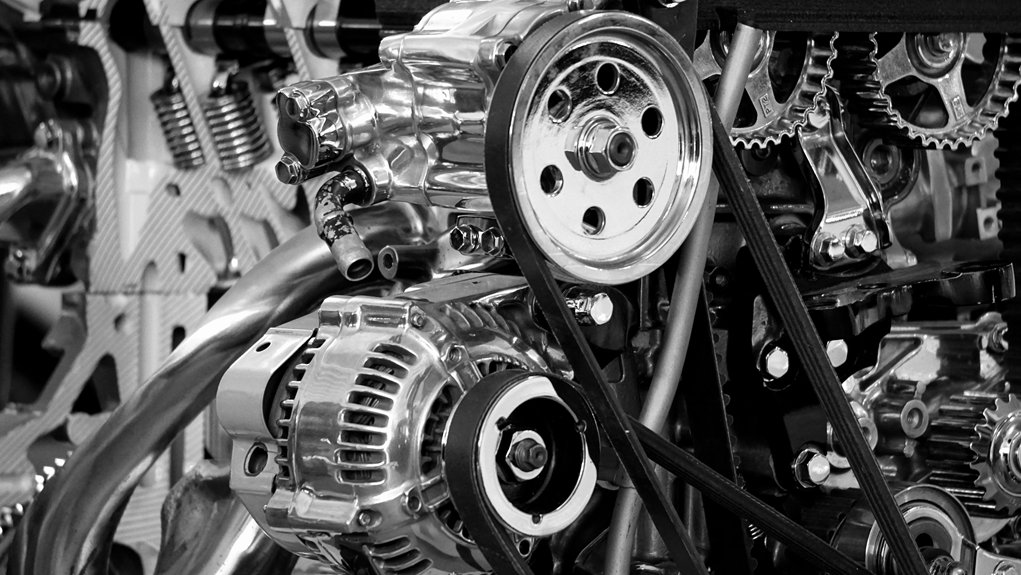Maintaining your work van’s transmission is key to keeping it reliable and avoiding costly repairs down the line. Regular checks, fluid changes, and mindful driving habits can make a significant difference. But there’s more to it than just fluid levels—knowing the right maintenance steps can extend your van’s lifespan and keep your workday running smoothly. Ready to learn how to keep your transmission in top shape?
Regularly Check and Replace Transmission Fluid
To keep your transmission running smoothly, you need to regularly check and replace the transmission fluid. Start by inspecting the fluid level; it should be within the recommended range on the dipstick. Low fluid levels can cause shifting problems, so top it off if needed.
Also, check the fluid color—healthy transmission fluid is usually pink or red. If it appears dark, cloudy, or has a burnt smell, it’s time for a fluid change.
Maintaining proper fluid levels and color helps prevent damage, ensuring your work van shifts smoothly and stays reliable on the road.
Use the Correct Transmission Fluid Type
Using the correct transmission fluid type is essential for maintaining your work van’s shifting performance and longevity. Always check your owner’s manual to ensure fluid compatibility with your vehicle’s transmission. Proper fluid selection supports transmission reliability and helps prevent premature wear. Using the right fluid prevents damage caused by incompatible fluids and maintains proper transmission function. Be mindful of the transmission fluid capacity; overfilling or underfilling can lead to issues. Regularly verify that you’re employing the recommended fluid type, especially after fluid changes. Proper fluid selection helps keep your transmission operating smoothly and extends its lifespan, reducing costly repairs down the road.
Inspect and Replace the Transmission Filter
Regularly inspecting and replacing your transmission filter is crucial for keeping your transmission running smoothly. During a fluid change, check the filter for dirt, debris, or damage.
If the filter appears clogged or worn, replace it promptly to prevent dirty fluid from circulating. A clean filter ensures proper fluid flow, reducing wear and overheating.
Don’t wait until transmission problems arise—perform routine filter replacements as part of your maintenance schedule. This simple step prolongs the life of your transmission and maintains ideal performance.
Monitor for Signs of Transmission Trouble
Monitoring your vehicle for signs of transmission trouble is essential to catching problems early before they cause costly damage. Regularly check fluid levels; low or dirty fluid can indicate issues. Pay attention to how your gears engage—slipping, delayed shifts, or difficulty shifting are warning signs.
If you notice any irregularities, address them promptly to prevent further damage. Unusual noises, burning smells, or a transmission that’s stuck in one gear also signal trouble. Staying vigilant about these signs helps you maintain smooth operation and extend your transmission’s lifespan.
Consistent monitoring allows you to take swift action, keeping your work van reliable and safe on the road.
Avoid Overloading Your Work Van
Overloading your work van can considerably strain its transmission and other critical components. Exceeding the cargo capacity puts unnecessary stress on the transmission, leading to premature wear or failure.
Proper weight distribution is equally important; uneven loads can cause handling issues and uneven wear on drivetrain parts. Always check your van’s specified cargo capacity and distribute weight evenly across the floor to prevent overloading certain areas.
Staying within these limits helps maintain transmission health and overall vehicle performance. By managing cargo and weight distribution carefully, you extend your van’s lifespan and reduce costly repairs down the road.
Practice Smooth Shifting and Driving Habits
Practicing smooth shifting and driving habits is essential for maintaining your transmission’s longevity. Focus on gentle gear shifting to prevent jerks that strain the transmission components. Proper clutch control guarantees smooth engagement and disengagement, reducing wear and tear.
Avoid racing the engine or shifting abruptly, as aggressive driving can cause unnecessary stress. Anticipate stops and accelerations to shift gears smoothly without forcing them.
Staying attentive and consistent with your shifting technique helps preserve transmission health. Remember, smooth driving habits not only improve fuel efficiency but also extend your transmission’s life, saving you time and money on repairs.
Schedule Professional Transmission Inspections
Regularly scheduling professional transmission inspections is crucial to catch issues early before they develop into costly repairs. During these inspections, a mechanic will check your transmission fluid levels and quality, ensuring it’s topped off and free of contamination.
Following an appropriate inspection schedule helps you identify potential problems like worn bands or leaks before they worsen. Don’t wait until you notice shifting issues or fluid leaks—regular inspections keep your transmission running smoothly.
A trained technician can recommend the right frequency for your work van based on usage, helping you avoid breakdowns and extend your transmission’s lifespan.
Conclusion
By staying on top of your transmission maintenance, you’ll keep your work van running smoothly and avoid costly repairs. Regularly check and replace the fluid, use the right type, and inspect the filter. Watch for signs of trouble and don’t overload the van. Practice smooth shifting and schedule professional inspections when needed. To ensure your transmission stays in optimal condition, consider scheduling your free TransScan or book an appointment today by calling us at (919) 471-2506 or visiting us online at Durham Transmission. Taking these simple steps will extend your transmission’s life and ensure your van remains dependable on every job.

